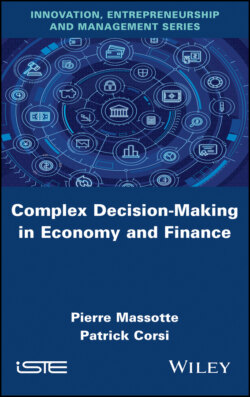Читать книгу Complex Decision-Making in Economy and Finance - Pierre Massotte - Страница 18
I.4.4. Structure of the book
ОглавлениеThis book is intended to, by describing our previous experience, provide a technology for maximizing the returns on investment, in terms of time, money, reputation, etc.
During their lifecycle, organizations, from matter to living organisms, enterprises, up to our brain and mental constructs, are evolving together and ever growing. They are inevitably faced with the “complexity problem”. Indeed, in order to grow, they embrace more and more complexity in the way business is presently conducted: they include ever more functionalities, interactions, control mechanisms, etc. Thus, and according to Gödel’s theory2, systems are associated with the failure to manage this complexity, thus creating vast uncertainties, unexpected (chaotic) behavior and uncontrolled risk. Complexity theory refers to multidisciplinary skills in both natural, mathematical and social sciences.
The first part of the book (“Dealing with Complexity”) is meant to willingly address the engineering and re-engineering situations found in today’s world, to understand and clarify the vision, complexity principles, with people’s alignment and their role in resolving or integrating complexity without overshadowing facts, data and objectives, and other factors. Meanwhile, the second part of the book (“Dealing with Risk”) opens up the discussion about risk analysis, the anticipation of new risks pertaining to complex environments and organizations, their operating conditions, in particular the financial and energy domains. Together, the two parts propitiously complement in providing food for thought and poise to action for the reader.
1 1 The work of the late American consultant Stephen Covey is fundamental in this respect.
2 2 For Kurt Gödel’s incompleteness theorems, see, for example, https://en.wikipedia.org/wiki/Gödel%27s_incompleteness_theorems.
